Emissions and Energy Use
Emissions and Energy Use
Lincoln College’s emissions in 2024 were estimated to be at least 2,063 tCO2e, as visible in the graph below. This figure encompasses all our Scope 1 and 2 emissions, as well as our Scope 3 emissions for utilities and waste. Additionally, it includes initial estimates for emissions related to procurement (including food), transport, and travel.
Unless otherwise stated the below figures were calculated using the government's conversion factors (Greenhouse gas reporting: conversion factors 2022, Greenhouse gas reporting: conversion factors 2023, Greenhouse gas reporting: conversion factors 2024) and our meter readings and estimates where required.
This page will be updated in 2025 with new figures.
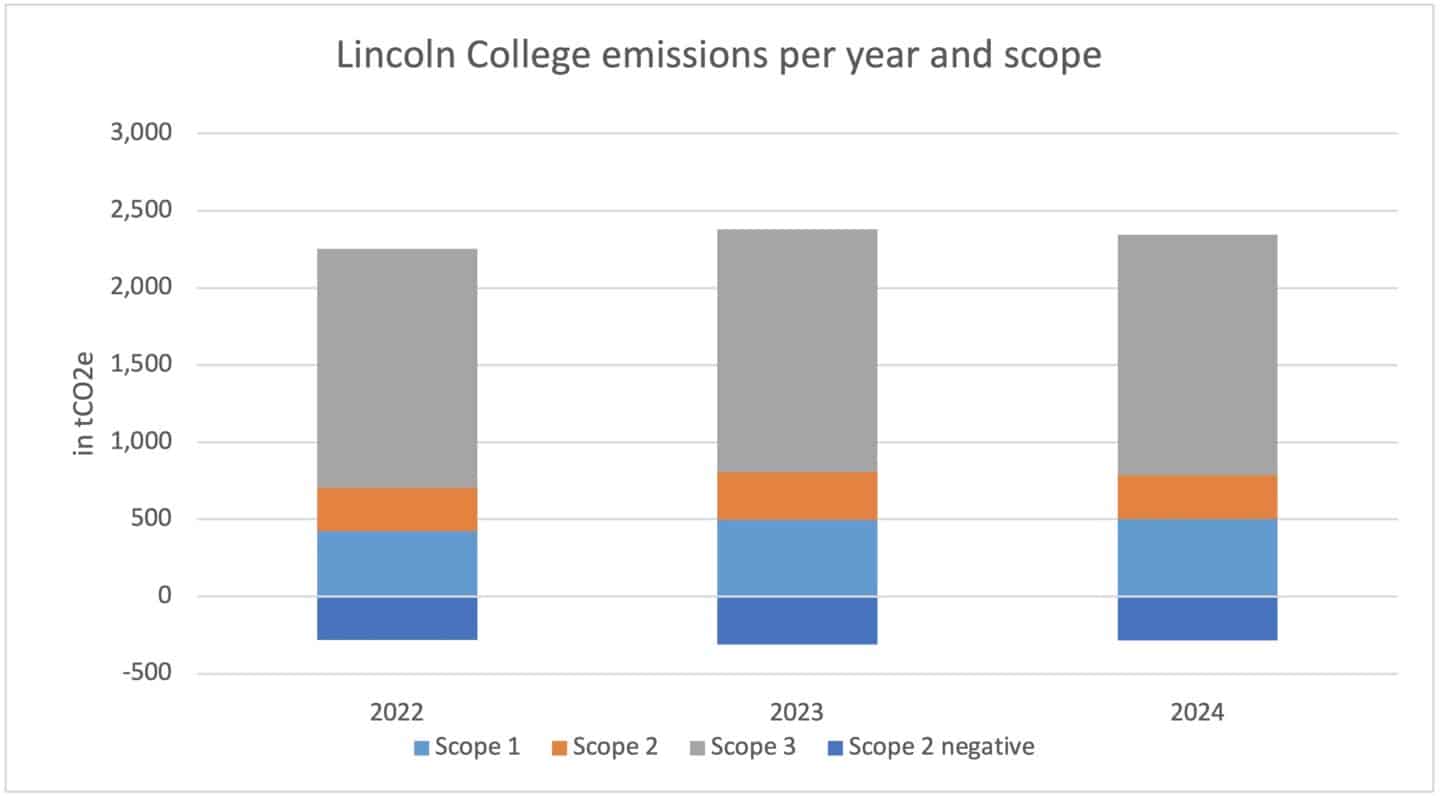

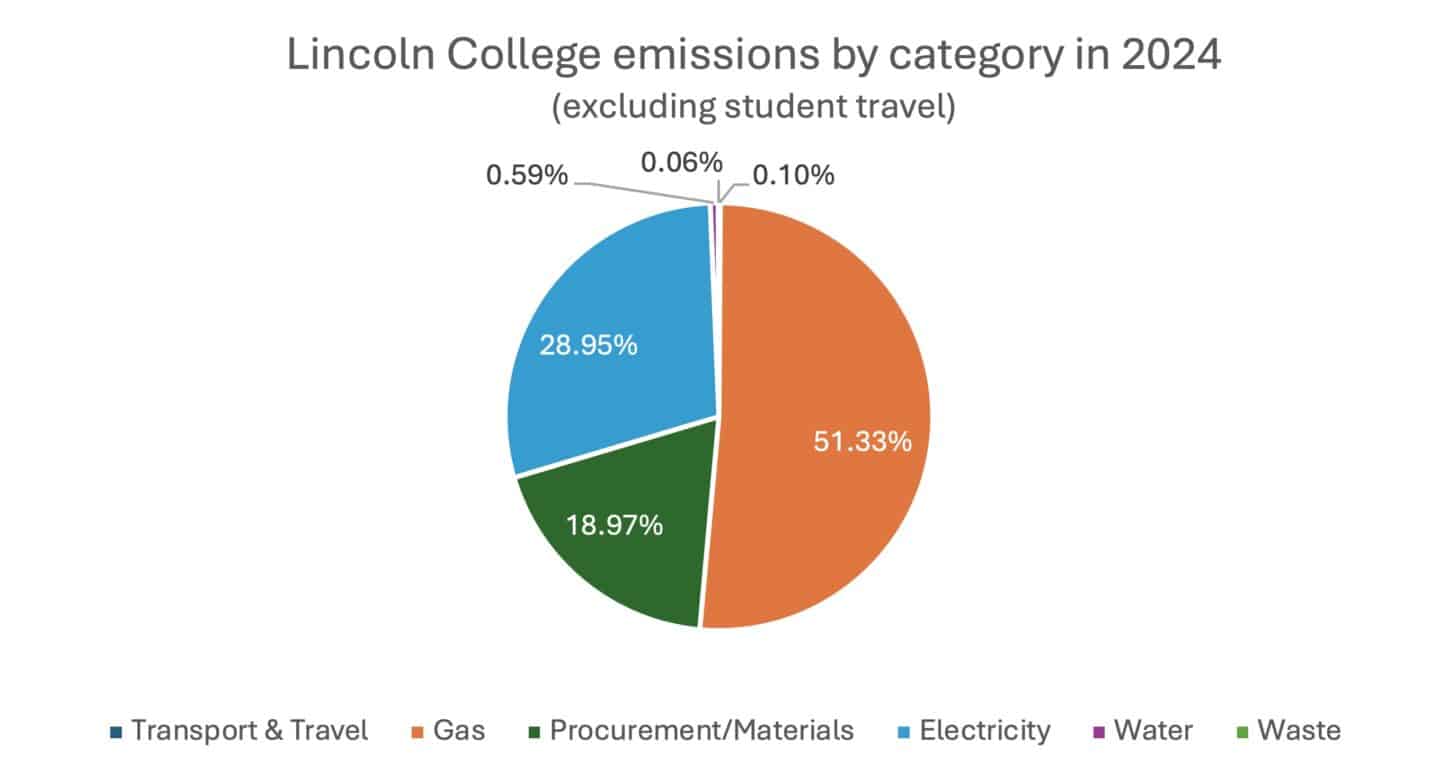
Scope 1: only gas remains to be phased out
Lincoln College’s Scope 1 emissions in 2024 were 502 tons of CO2 equivalent (tCO2e). In addition, our gas use caused upstream scope 3 emissions of 82 tCO2e in 2024. This means that gas use accounted for about 584 tCO2e in 2024, which equates to about 23% of our estimated emissions when student travel is included and 51% when student travel is omitted. We are working to remove these emissions by degasifying our buildings.

Scope 2: Electricity
Lincoln College has a long-standing commitment to purchasing renewable electricity. By doing so, we have been able to avoid 283 tCO2e in 2024. Nonetheless, our electricity use in 2024 caused upstream emissions amounting to 93 tCO2e. We are working to reduce this through energy efficiency measures and by producing our own renewable electricity on-site by installing solar panels. See the installation at our Museum Road site.
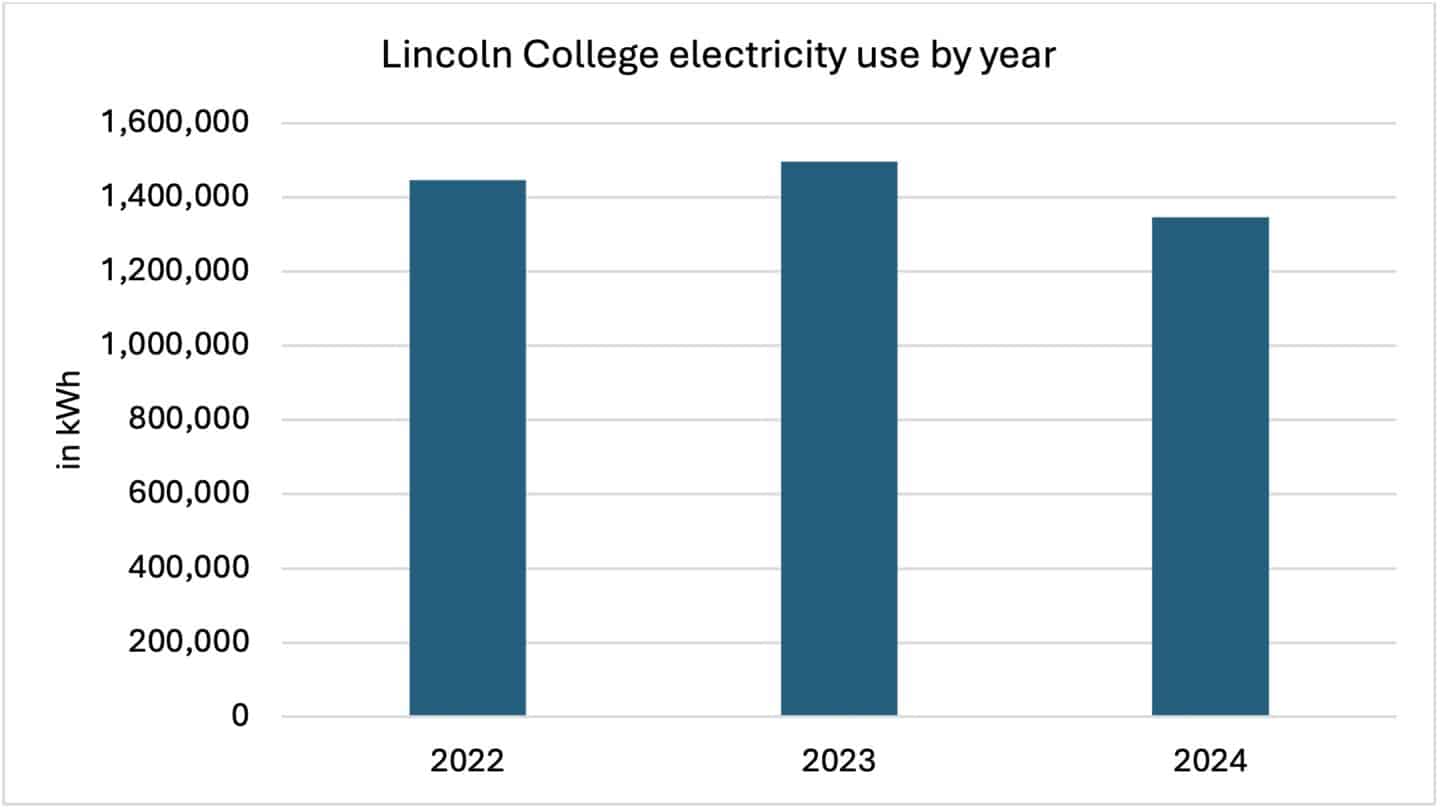
Scope 3: Estimating our upstream and downstream emissions
We are also tracking our scope 3 emissions related to water and waste and have our initial estimates related to procurement (including food) and transport as well as student and business travel.
Water
In 2024, Lincoln’s water use caused about 6 tCO2e. The college is committed to reducing water use where possible and has various water-saving devices installed throughout the college and is collecting rainwater for watering the gardens.
Waste
All our dry mixed recycling, food recycling, general waste, and glass recycling are weighed on collection at our Main Site, Bear Lane, Museum Road, Little Clarendon Street and the sports ground, allowing us to track our waste monthly. We also collect waste weights for junk and WEEE waste. In 2024 we had more than 90 tonnes of waste, as visible in the graph below. We are investigating the increase in total waste internally and with our waste providers.
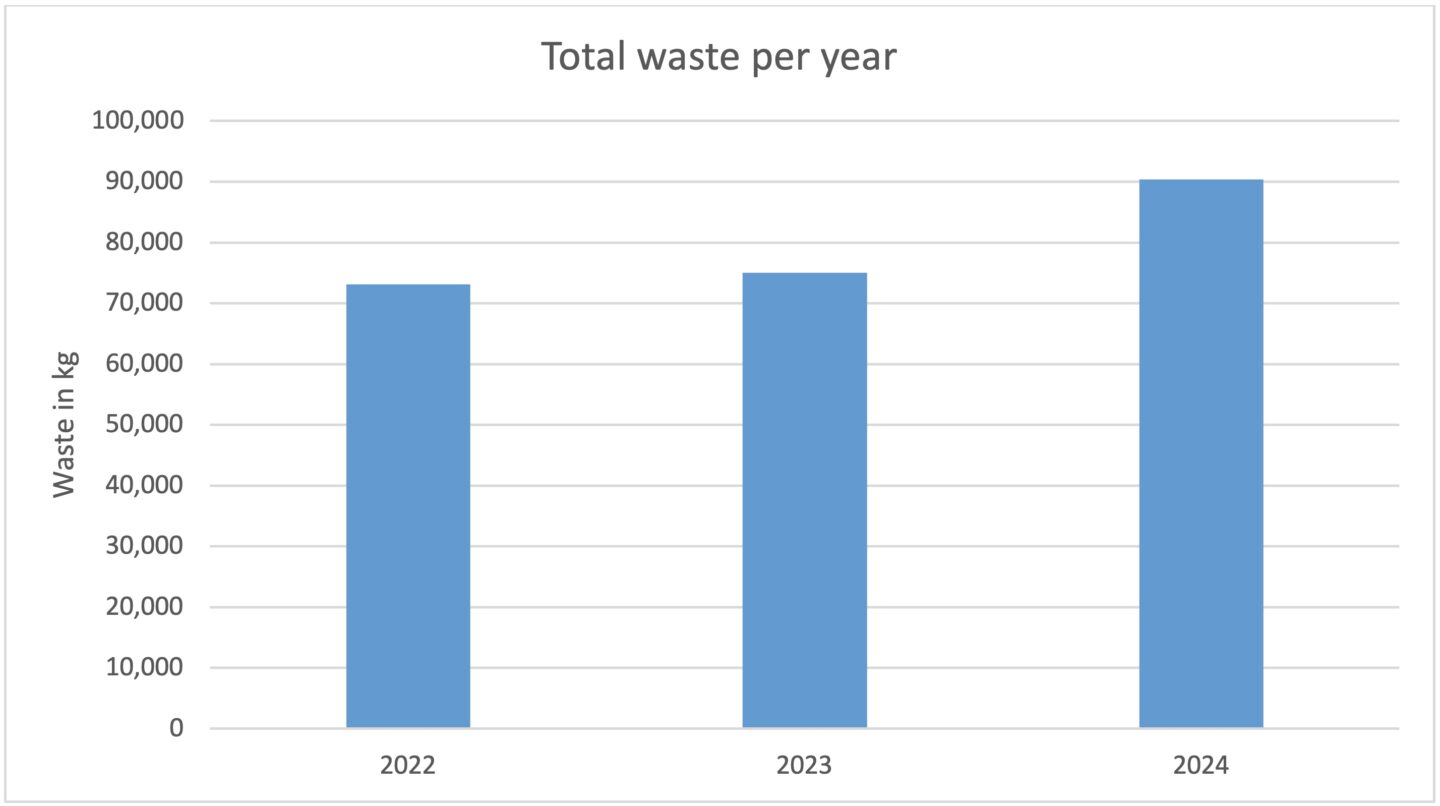
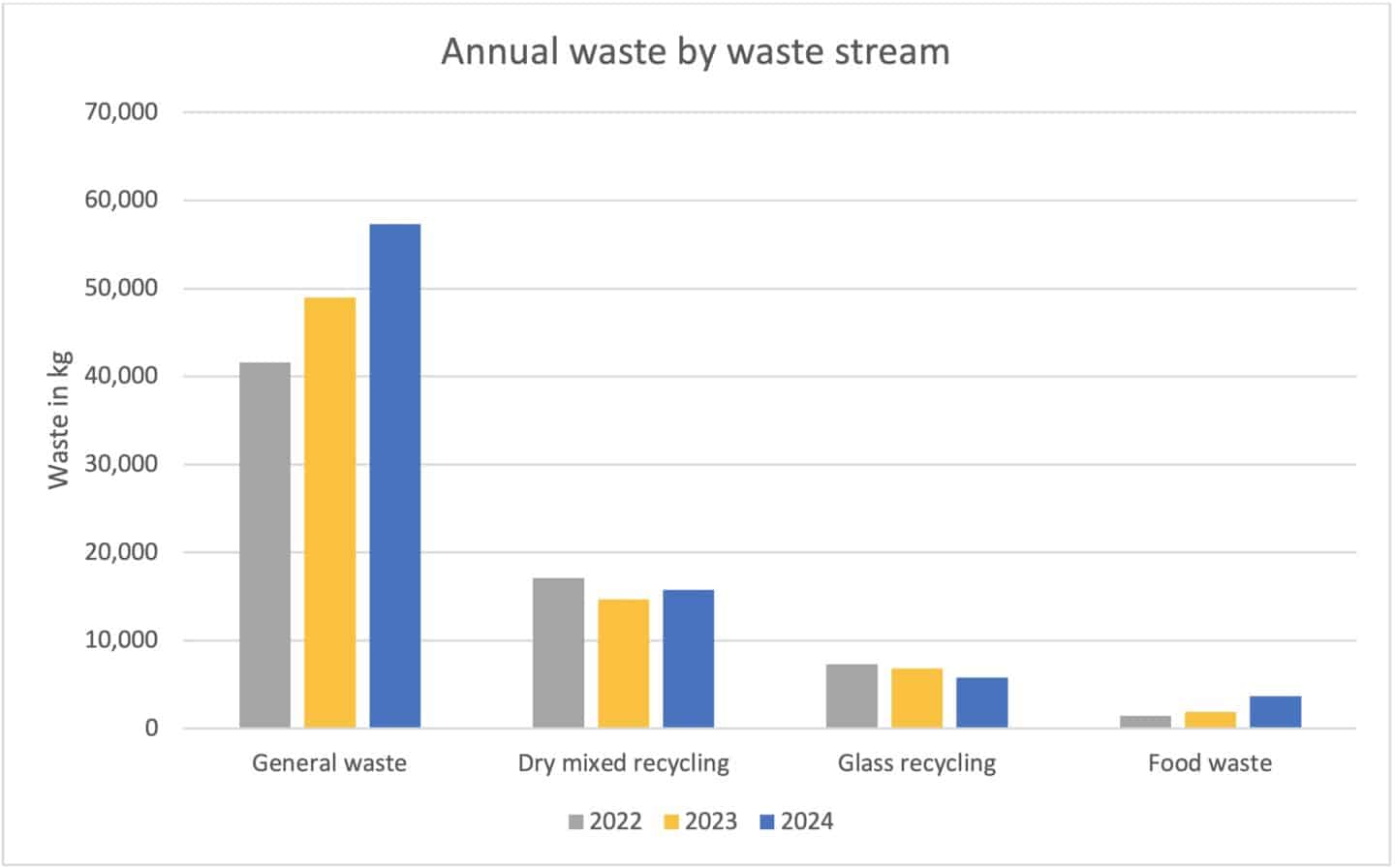
Emissions from our weighed waste caused 0.57 tCO2e downstream emissions in 2024. These emissions figures only account for waste collection, as emissions from recycling are taken into account in procurement in the government's conversion figures. While this is less than a tenth of a percent of our total emissions, we are nonetheless committed to reducing this as it has wider impacts in terms of resource use and pollution.
Procurement
Our waste figures highlight the amounts of materials produced for us, with at least 30 tCO2e upstream emissions related to the production of items that ended up in our glass waste and dry mixed recycling in 2024. Our IT procurement was also responsible for around 7.3 tCO2e in 2023, based on conversion figures from a recent study (Lövehagen et al., 2023). Furthermore, as is visible in the graph below, our estimated catering emissions amount to 110 tCO2e in 2024, based on conversion figures for meals from a report for UCL’s catering emissions. These procurement emissions are only an initial estimate with large gaps in data remaining. Thus, the proportion of our total emissions will be higher than the 9% of our estimated emissions including student travel and 19% excluding student travel.

Transport and travel
An initial estimate of our transport and travel emissions, based on emissions of comparable colleges, lies at 1,171 tCO2e including student travel from and to College to their home destination which the University also accounts for. While there is a lot of uncertainty associated with this figure, the scale of these emissions is important to note as they are higher than all other currently calculated and estimated emissions combined.